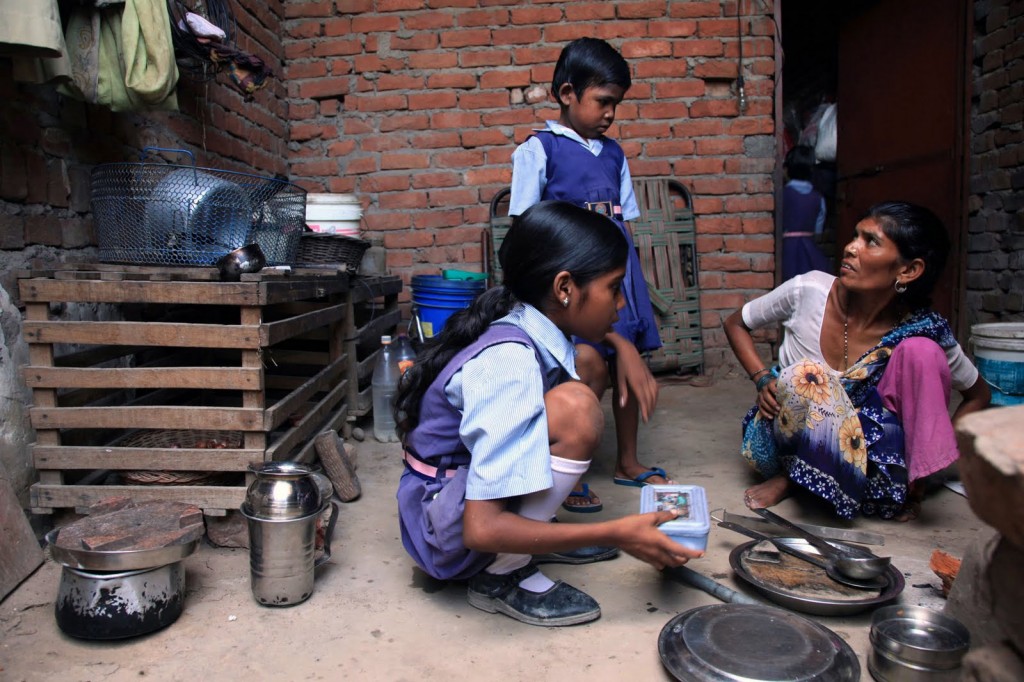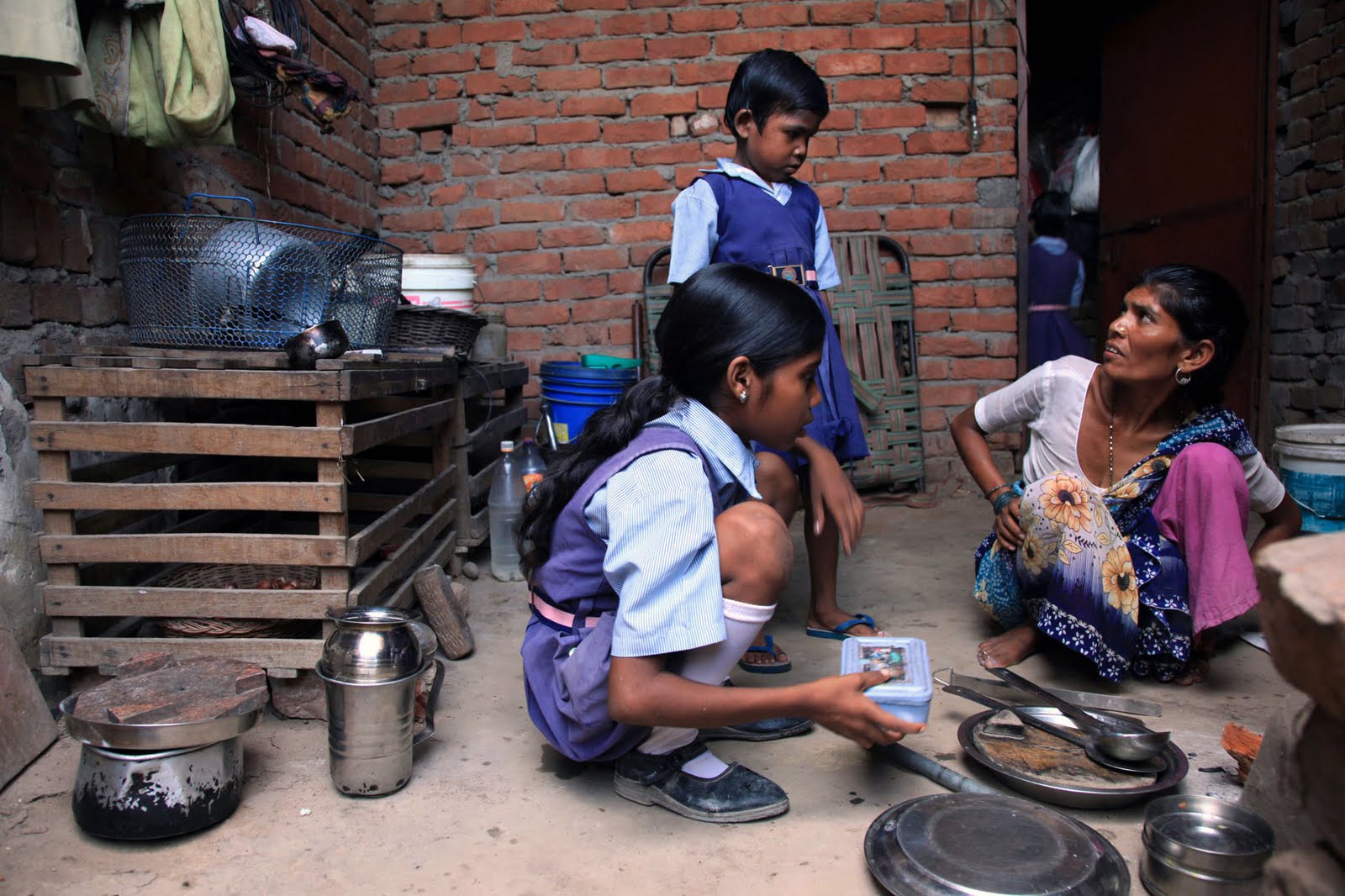Marilyn Smith’s slum photographs on display
by Sophie Ibister (Staff Writer)
Email: cascade.arts [at] ufv [dot] ca

Brightly coloured photographs lined the main room of the Centre for Indo-Canadian Studies in UFV’s University House on Tuesday, October 26. A good turnout of people were milling about, chatting in small groups, sipping wine and enjoying appetizers. The photos were displayed in an order that, accompanied by a six-page colour handout, told a story, which, while interesting to a western audience, shows a familiar reality to the estimated 68 million slum-dwellers in India. Faced with a topic that could turn hopeless, Marilyn Smith shares the beauty and vibrancy of her experience with photos that capture laughter, joy and inspiration for real change.
Photojournalist Marilyn Smith’s slum project got its start when Smith was looking for a non-governmental organization where she could volunteer. She visited Janta Colony, a 14,000-resident-slum on the outskirts of Chandigarh, India with a group called Developing Indigenous Resources (DIR). The purpose of DIR is to empower slum residents to protect themselves from preventable diseases. The DIR trains health promoters (HPs) from within the community to do things like weigh children every month and track malnourishment. They also teach the local women how to make re-hydration solutions from common household ingredients, as dehydration is a leading cause of fatal illness. The exhibit gets its name from Child Advocates for Social Empowerment (CASE), a program for older children to learn practical health lessons after school, which they can then pass on to the younger children for whom they often are caregivers.
Photography is a side project for Smith, who lives in Paris and works for the International Energy Agency. The IEA does work to mitigate climate change, so turning her photography talents to social issues was no stretch for Smith. She visited Janta Colony for five weeks in November 2009 and again in July 2010, during which times she took the stunning photos of daily community life that were recently on display at UFV. During Smith’s first visit, she stayed in a hotel in Chandigarh and traveled into the slums with DIR every day during daylight to take photos.
Many of the photos are taken outdoors in the slums. Outside is where members of the community gather to engage in activities like yoga, cold water baths (refreshing due to the hot, dry weather) and courtyard cooking classes hosted by DIR. Smith took pictures of children taking care of their younger siblings, children at their monthly weigh-ins and families cooking, playing and talking. These mundane images are displayed on a background of poverty injected with colour: bright teal and lavender walls, bright green, orange and blue clothes, red and gold curtains.
On Smith’s second trip to Janta Colony, she was able to share the home of a family in the slums for the two-week duration of her stay. Smith explained, “I got a sense of what life was like in the evening.” For families in the slums, electricity is not something to be depended on, and it’s dangerous to go out at night. “In the evening,” she said, “you really get a sense [of struggle] … You can’t do much without electricity.” Photos from this trip and the earlier one are interspersed, but it’s clear that the grainy and intimate night-time photos are from the second trip.
The work that Smith has accomplished with DIR is rewarding. Slums are illegal dwellings, and as such, the government in India has no interest in helping them with pressing problems such as infant and maternal health, sewage and electricity. Groups like DIR, whose philosophy is to empower locals to help themselves, are taking the right approach to this problem. Slums are largely hidden. “Chandigarh is one of the wealthiest and most modern cities in India,” Smith explained, “but if you stopped anyone on the street they wouldn’t have any idea that these slums exist.” Organizations like DIR and exhibits like On the CASE shed light on slums, and on what ordinary people can do to help.
The On the CASE photo exhibit has left UFV and will have a brief stint at the Clayburn Gourmet Gallery (3033 Immel Street in Abbotsford) before moving on to the University of Alberta and other universities in Canada. For more information about Marilyn Smith, and to see the photos for yourself, go to http://marilynslumproject.blogspot.com


